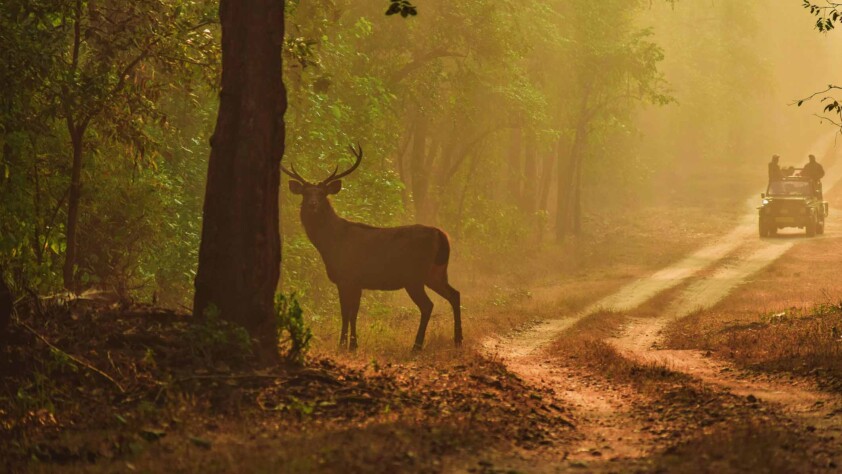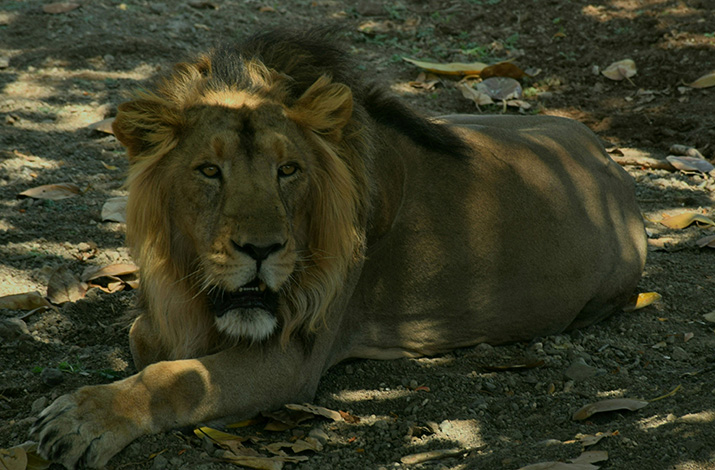
Exploring Gir National Park: The Last Abode of the Asiatic Lion
Gir National Park, also known as Sasan Gir, is a wildlife sanctuary in Gujarat, India, renowned as the last refuge of the Asiatic lion (Panthera leo persica). Spanning an area of approximately 1,412 square kilometers, this park is a critical conservation zone that plays a vital role in preserving the endangered Asiatic lion and the diverse ecosystems of the region. Rich in biodiversity and cultural heritage, Gir National Park offers an unparalleled opportunity to experience wildlife and nature at its finest. This article delves into the history, wildlife, conservation efforts, and visitor experiences at Gir National Park.
Historical Significance
The history of Gir National Park is closely intertwined with the conservation efforts for the Asiatic lion. In the early 20th century, the population of Asiatic lions was on the brink of extinction due to hunting and habitat loss. Recognizing the need for urgent action, the Nawab of Junagadh declared the Gir forest a protected area in 1900. This initiative marked the beginning of concerted efforts to conserve the Asiatic lion, transforming Gir into a sanctuary where these majestic creatures could thrive.
In 1965, Gir was officially designated as a wildlife sanctuary, and in 1975, it gained the status of a national park. These designations provided the legal framework necessary to implement more rigorous conservation measures and protect the habitat from further encroachment and exploitation.
Biodiversity in Gir National Park
While the Asiatic lion is undoubtedly the star attraction of Gir National Park, the sanctuary is home to a remarkable variety of flora and fauna. The park’s diverse ecosystems include deciduous forests, grasslands, scrublands, and perennial rivers, creating a rich habitat for numerous species.
1. Mammals:
- Besides the iconic Asiatic lion, Gir is home to several other mammal species, including leopards, spotted deer (chital), sambar deer, nilgai (blue bull), four-horned antelope, Indian gazelle, and wild boars. The park also shelters smaller mammals such as jackals, striped hyenas, and jungle cats.
2. Birds:
- Gir National Park is a paradise for bird watchers, boasting over 300 bird species. Prominent avian residents include the crested serpent eagle, changeable hawk-eagle, brown fish owl, Indian eagle owl, and various species of vultures. The park’s water bodies attract numerous migratory birds during the winter months, adding to the park’s avian diversity.
3. Reptiles and Amphibians:
- The park supports a healthy population of reptiles, including the Indian cobra, Russell’s viper, saw-scaled viper, and monitor lizard. The Kamleshwar Dam within the park is a crucial habitat for marsh crocodiles, providing a safe breeding ground for these ancient reptiles.
4. Flora:
- The vegetation of Gir is predominantly dry deciduous, with teak, acacia, and banyan trees being common. The diverse flora supports the park’s rich wildlife and contributes to the ecological balance of the region.
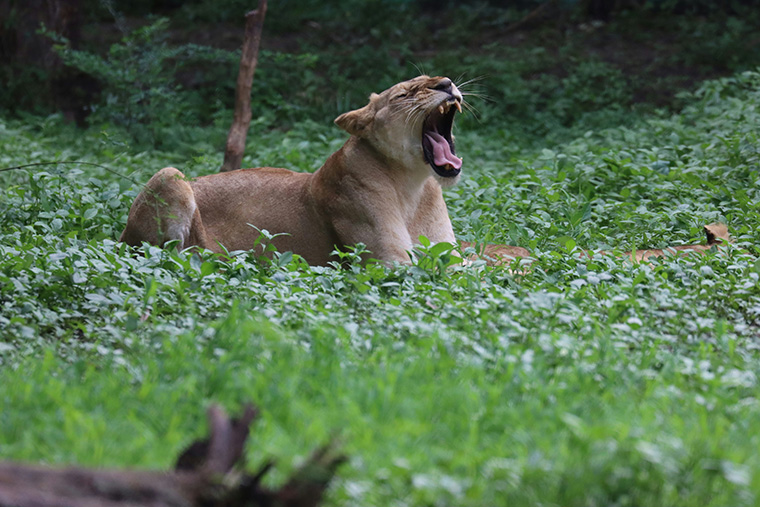
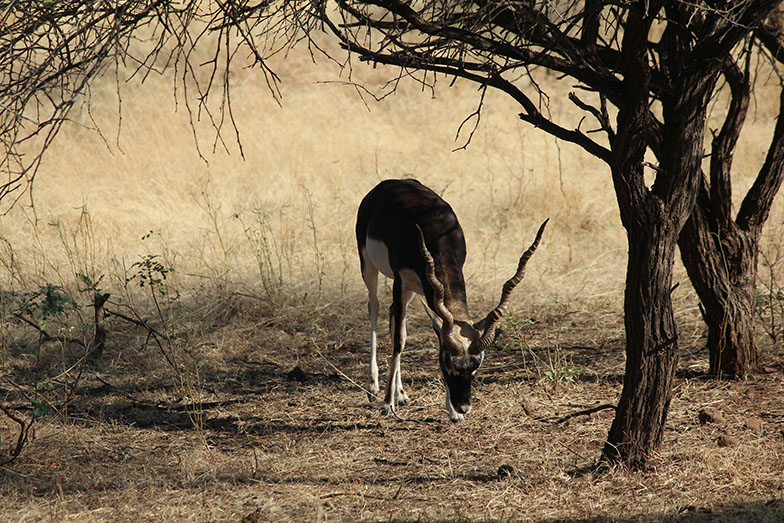
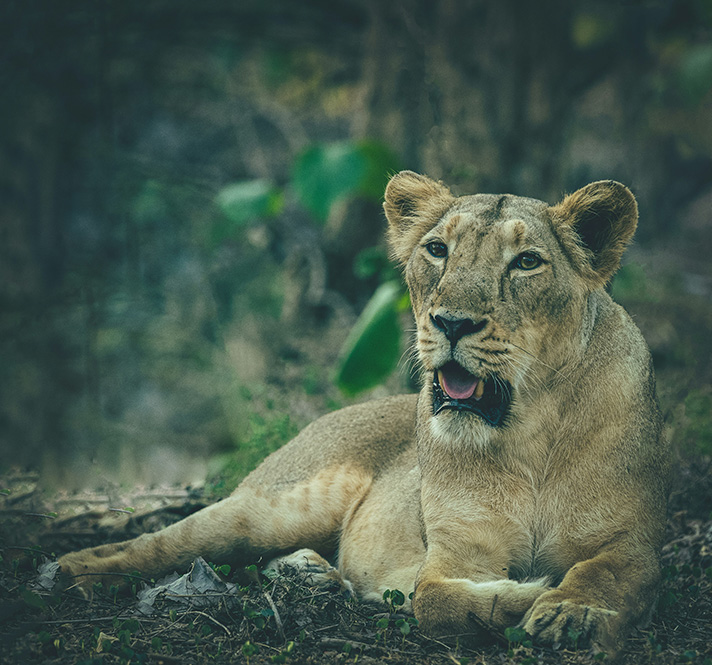
Conservation Efforts
The conservation efforts at Gir National Park are a testament to the successful preservation of endangered species through dedicated management and community involvement. The Asiatic lion population, which was once critically low, has shown a significant increase due to these efforts.
1. Habitat Management:
- Regular monitoring and management of the habitat ensure that the ecosystem remains conducive to the lion population. This includes controlling forest fires, managing water resources, and maintaining the grasslands and scrublands that lions and other herbivores depend on.
2. Anti-Poaching Measures:
- To combat poaching, the park authorities have implemented stringent measures, including patrols, surveillance, and community awareness programs. The involvement of local communities in conservation efforts has been crucial in reducing poaching incidents.
3. Research and Monitoring:
- Continuous research and monitoring of the lion population and their prey base are essential components of the conservation strategy. Scientific studies provide valuable insights into the behavior, health, and genetics of the lion population, guiding future conservation actions.
4. Community Involvement:
- Engaging local communities in conservation activities has been a cornerstone of Gir’s success. Programs that promote eco-tourism, provide alternative livelihoods, and involve locals in wildlife protection have fostered a sense of ownership and responsibility towards the park.

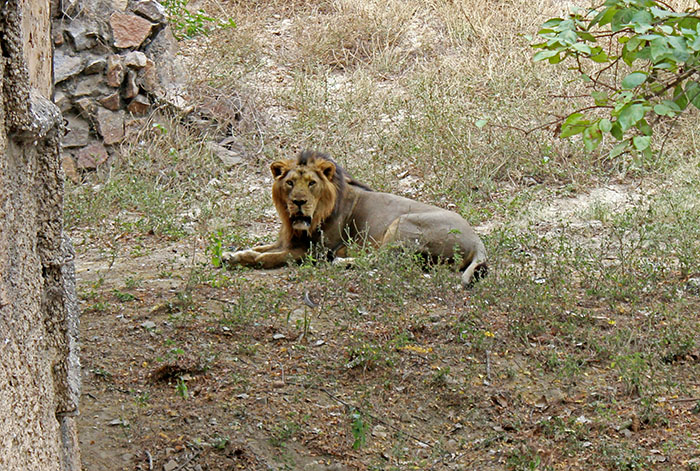
Visitor Experience
Gir National Park offers a unique and enriching experience for visitors, combining wildlife adventure with cultural exploration. The park is accessible from the town of Sasan Gir, which serves as the main entry point and hub for tourists.
1. Safari Tours:
- Guided safari tours are the primary way to explore the park and observe its wildlife. These tours are conducted in open jeeps and led by experienced naturalists who provide insights into the park’s ecology and its inhabitants. The chances of spotting Asiatic lions are high, making the safaris an exhilarating experience.
2. Interpretation Zones:
- The park has several interpretation zones and visitor centers that provide educational exhibits and information about the park’s wildlife, conservation efforts, and the history of the region. These centers enhance the visitor experience by offering a deeper understanding of Gir’s natural heritage.
3. Bird Watching:
- For bird enthusiasts, Gir offers excellent bird-watching opportunities. The diverse habitats, including forests, water bodies, and open grasslands, attract a wide variety of bird species, making it a paradise for ornithologists.
4. Cultural Experiences:
- Visiting the nearby Maldhari villages provides a glimpse into the traditional lifestyle of the pastoral communities living in harmony with the park’s wildlife. The Maldharis are semi-nomadic herders who have coexisted with the lions for generations, and their unique culture and traditions add a rich cultural dimension to the Gir experience.

